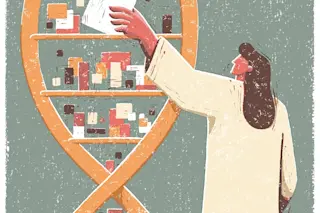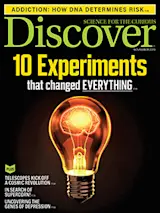In the late 1990s, geneticists began studying extinct species’ DNA, analyzing hair and bone preserved in frozen tundra. At that time, most computers stored data on floppy disks that held just 1.44 megabytes of memory — smaller than the average selfie. Today, those disks might as well be Ice Age artifacts, too. Not only is their storage capacity miniscule by today’s standards, but recovering their data is practically impossible, due to the degradation of their materials and the special equipment required to read them.
The floppy disk encapsulates some of the greatest long-term challenges to computer science. According to Microsoft principal researcher Karin Strauss, future storage will need exponentially greater density to hold the data we produce as electronic devices become a greater part of our lives. Plus, long-term archiving will depend on preserving data in a format that will remain readable, on materials that won’t degrade.
The answer to ...















